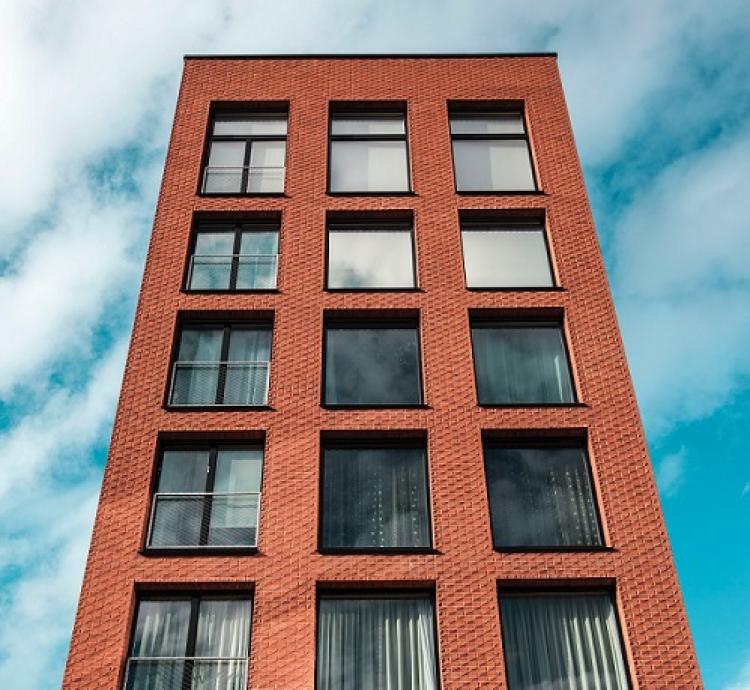
CAVITY TRAYS ARE AN ESSENTIAL PART OF MASONRY BUILDINGS, DIRECTING MOISTURE AWAY FROM THE INNER LEAF, REDUCING THE RISK OF DAMP. HOWEVER, AS MASONRY CONSTRUCTION MOVES AWAY FROM TRADITIONAL BLOCKWORK MAIN STRUCTURES THERE ARE ADDITIONAL FACTORS TO CONSIDER WHEN CHOOSING THE RIGHT SOLUTION— ESPECIALLY WITH REGARDS TO FIRE PERFORMANCE.
Fire performance of cavity trays in ‘relevant buildings’ Applicable since the end of 2018, changes to Approved Document B (Fire safety), Regulation 7 state that for high-rise residential and other relevant buildings over 18 metres, cavity trays (alongside other key facade elements) must achieve an A1 or A2- s1,d0 Euroclass rating, unless they are between two leaves of masonry. This means that any cavity trays being installed between a SFS inner leaf and masonry outer leaf must be classified as non-combustible to be compliant.
Initially, this was achieved by using a metal cavity tray which is packed out with non-combustible insulation on site — which is time consuming, difficult to ensure high quality and lacking in flexibility. However, after a few years of prototyping and engagement with contractors and industry bodies such as the BBA and NHBC, solutions are now coming to market which combine flexible aluminium cavity trays with integral, pre-compressed non-combustible insulation to offer a single-component solution ideal for SFS constructions.
Simple solution, simple installation
The factory-engineered nature of non-combustible cavity trays bring a number of key benefits. In a practical sense, the single component allows for a quick, precise installation, requiring just a cutting knife and sealing tape with no need to add additional insulation. Tests conducted in classroom conditions found that this was around eight times faster to fit than traditional approaches, allowing an installation rate of up to 100 linear metres an hour.
As a single component, they not only provide reliable performance and quality, but also can be holistically tested to ensure accurate fire performance classification, offering peace of mind that the product as installed is fully compliant.
Meanwhile the flexibility of the aluminium tray, combined with the compression of the insulation, allows the product to flex with the natural movement of the building, ensuring integrity and continuity of weatherproofing.
For more information visit: www.siderise.com
Stay in touch: